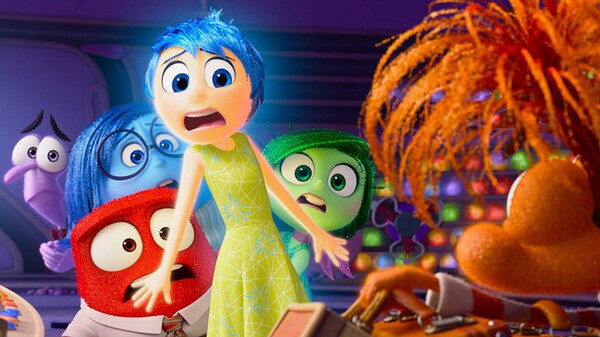Series in 2016. From House of Cards to Gomorra: Evil always Conquers
The year 2016 has been quite the full year for television series, with selections for all tastes. Viewers were offered a variety of choices from comedies to thrillers, science fictions to cop shows. Greatly anticipated comebacks, such as X-Files, made their way to the screen. New seasons in Gomorra and House of Cards gained significant popularity. Novelty shows, like Billions, Vynil and Outcast, exhibit promising popularity. The stories and characters differ, but for the most part, they share a common theme: at the center of each story lies a villian upon which the entire series revolve. Among the many shows now playing, we’ve chosen two in particular to demonstrate this perspective: House of Cards and Gomorra.
House of Cards: When the Villian Wins
It was March 2011 when Netflix, the US distribution platform for online streaming, decided to start producing original content for viewers for the first time ever. The choice fell to House of Cards, a story that tells the tricks and power games of the White House. The production was entrusted to Oscar winner Kevin Spacey, who doubled as the main actor and the executive producer.
The main character of House of Cards is Frank Underwood, a democratic political majority leader in Congress, devoured by fame and ambition for power. At his side is his wife, Claire Underwood, a cold and calculating woman. An aspiring queen, more than a first lady, she’s an accomplice to ruthless conspiracies and plots for her husband’s rise to power.
Love it or hate it, Frank Underwood quickly became an icon in the collective film mind, a symbol in the complete absense of scruples and plots that characterize modern politics. (This even occurred in real politics, to the point of being quoted by President Obama.) He is a man with a lot of carisma, and at the same time, a strongly negative “hero”, whose only objective is to gain power by becoming the President of the United States. His sharp, disdainful remarks clearly reveal his character as cynical, opportunist, underhanded and merciless: “A lion does not ask permission before he eats a zebra”, or “There are two types of Vice Presidents: doormats or matadors, which do you think a intend to be?” If you have to hurt him, do it in an excessive and unsupportable way so that he understands that you can cause him much more pain than he can cause you.” But perhaps the phrase that best represents the nature of Frank Underwood and his insatiable thirst for power is the following: “Money is the Mc-mansion in Sarasota that starts falling apart after 10 years. Power is the old stone building that stands for centuries. I cannot respect someone who doesn’t see the difference.” He’s a black shark that knows how to navigate dark waters full of other sharks like himself. And the public likes this model! The more that House of Cards becomes politically incorrect and the more that Frank Underwood stabs and buries his opponents, the more the viewer roots for him and lifts him up on a pedastal, rejoicing in the successes of his plots, almost to the point of admiring his devious and opportunistic model.
The success of House of Cards, primarily in Season One, was global and unanimous. Both critics and the public praised this television series. The fourth season, broadcasted last spring, shows no signs of decline. Surely the timing of the series, with the actual upcoming elections in the White House, contributes to the show’s success and perhaps drew in new viewers. The great novelty of House of Cards (and maybe even the real reason behind its commercial success) is the complete absence of a hero. The story completely lacks a good protagonist with positive values (though having defects and weaknesses) with which the viewer can identify himself. The classic good versus bad pattern is missing. There is only the anti-hero, Frank Underwood, who dominates the scene, fights his political battles against other equally negative characters. Then, in the end, he always wins. It is the parodoxical sublimination and ransom of the villian, a distressing scenario where there are no references to positive role models, neither political, nor social, nor familial.
Gomorra: A Series with no Good Guys
Let’s turn now to a series produced in Italy, Gomorra, based on the famous book by the author Roberto Saviano. The second season aired last spring and the series’ success has been huge, not only in Italy, but in 170 other countries. It was distributed by Sky in the UK, HBO in Latin America, and The Weinstein Company in the US. It is considered the most successful Italian product in history, being the only one to receive acclaim from critics and public in the US and beyond. The plot is simple. It focuses on the Camorra war between two rival groups: the clan of Savastano and the secessionists, who are continually fighting for control of Scampia- a suburb of Naples, and for control of drug and weapon trafficking. Betrayals, reprisals, violence, and plot twists are in abundance, in the classic ganster-mafia film fashion.
In Gomorra, there are no good characters. You don’t see cops or officials who fight the criminal world as their mission, or out of duty. There is no villian who repents and is redeemed perhaps at the point of death, like Al Pacino in The Godfather. Here, just as in House of Cards, evil never fights the good. It is only and always a fight among the bad. There is no story of bloodshed that intersects with a love story. The dialogue about the eternal conflict between the good redeemer and the ireedemable villian, or the bad guy who is eventually redeemed, is missing completely from the storyline.
The authors seem to assume the challenge of narrating Hell from its bowels, of descending into the darkest and most degrading depths of society where only the devils are capable of dwelling and speaking to that dark and desolate world. The risk to this approach, however, is to paint completely negative characters, capable of killing innocent children on command- fearlessly and without remorse- in an attractive, charming, and seductive light. If there is no clear condemnation of these realities, it is easy to [unconsciously] generate empathy and identifiation, or even worse, emulation, in the hearts of young viewers. You can see how this is possible among unemployeed youth, without a future, who swarm like insects under dead leaves, in the same suburbs represented by these television series.
In Gomorra, as Robert Saviano himself recently declared, salvation does not exist for anyone. It is a damned world of the damned, where the State, institutions, police, law, civil society, and even mercy, are deliberately absent altogether. It is a television series that screeches like nails on a chalkboard, empty of complacency and above all, empty of the hope that another world, beyond that of violence and revenge, is really possible.














